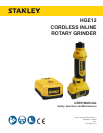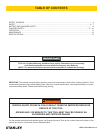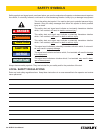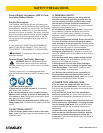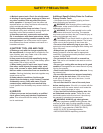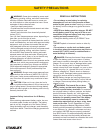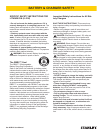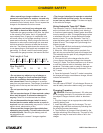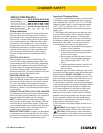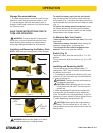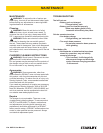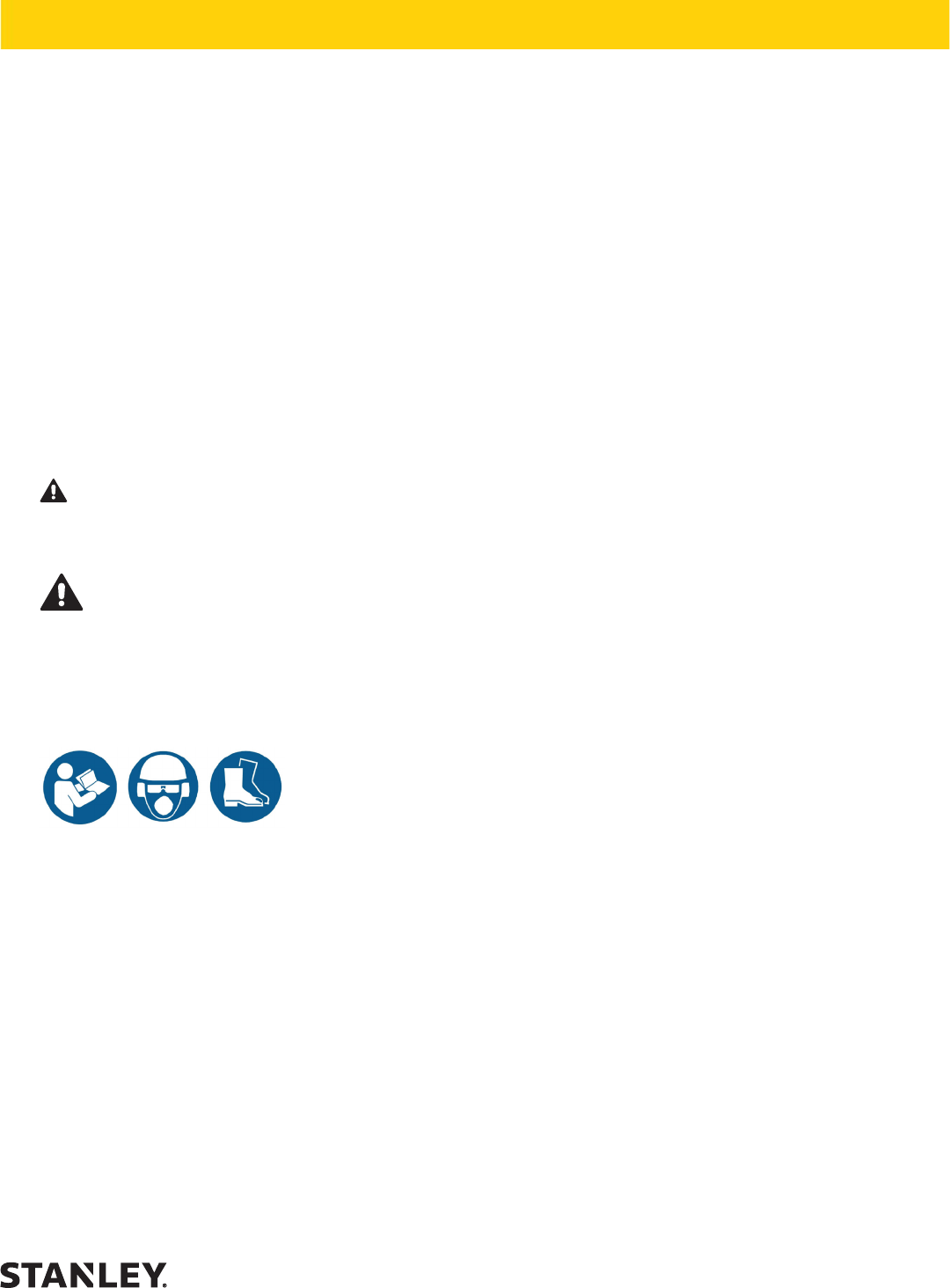
HGE12 User Manual ◄ 5
Product Safety Information: HGE12 Cord-
less Inline Rotary Grinder
Product Description
This Cordless Inline Rotary Grinder is a battery pow-
ered, hand-held, tool that is tted with an inserted tool
whose shank is clamped in a collet chuck. The inserted
tool is typically a carbide burr, or stone permanently
mounted on a shank or mandrel. The intent of this tool
is for railroad signal communication, surface prepara-
tion essential for pin brazing applications on rail. Do
not use this tool for applications other than what it is
intended for.
IF YOU HAVE ANY QUESTIONS OR COMMENTS
ABOUT THIS OR ANY DEWALT TOOL, CALL US
TOLL FREE AT: 1-800-4-DEWALT (1-800-433-9258)
WARNING: To reduce the risk of injury, read the
instruction manual.
General Power Tool Safety Warnings
WARNING! Read all safety warnings and
instructions Failure to follow the warnings
and instructions may result in electric shock, re and/or
serious injury.
The term “power tool” in the warnings and safety
refers to the battery-operated HGE12 (cordless) rotary
grinder.
1) WORK AREA SAFETY
a) Keep work area clean and well lit. Cluttered or
dark areas invite accidents.
b) Do not operate power tools in explosive atmo-
spheres, such as in the presence of ammable liq-
uids, gases or dust. Power tools create sparks which
may ignite the dust or fumes.
c) Keep children and bystanders away while oper-
ating a power tool. Distractions can cause you to lose
control.
2) ELECTRICAL SAFETY
a) Do not expose power tools to rain or wet condi-
tions. Water entering a power tool will increase the risk
of electric shock.
3) PERSONAL SAFETY
a) Stay alert, watch what you are doing and use
common sense when operating a power tool. Do
not use a power tool while you are tired or under
the inuence of drugs, alcohol or medication. A
moment of inattention while operating power tools may
result in serious personal injury.
b) Use personal protective equipment. Always wear
eye protection. Protective equipment such as dust
mask, non-skid safety shoes, hard hat, or hearing
protection used for appropriate conditions will reduce
personal injuries.
c) Prevent unintentional starting. Ensure the switch
is in the off position before connecting to battery
pack, picking up or carrying the tool. Carrying power
tools with your nger on the switch or energizing power
tools that have the switch on invites accidents.
d) Remove any adjusting key or wrench before
turning the power tool on. A wrench or a key left at-
tached to a rotating part of the power tool may result in
personal injury.
e) Do not overreach. Keep proper footing and bal-
ance at all times. This enables better control of the
power tool in unexpected situations.
f) Dress properly. Do not wear loose clothing or
jewelry. Keep your hair, clothing and gloves away
from moving parts. Loose clothes, jewelry or long
hair can be caught in moving parts.
g) If devices are provided for the connection of
dust extraction and collection facilities, ensure
these are connected and properly used. Use of dust
collection can reduce dust-related hazards.
4) POWER TOOL USE AND CARE
a) Do not force the power tool. Use the correct
power tool for your application. The correct power
tool will do the job better and safer at the rate for which
it was designed.
b) Do not use the power tool if the switch does
not turn it on and off. Any power tool that cannot be
controlled with the switch is dangerous and must be
repaired.
c) Disconnect the battery pack from the power tool
before making any adjustments, changing accesso-
ries, or storing power tools. Such preventive safety
measures reduce the risk of starting the power tool
accidentally.
d) Store idle power tools out of the reach of chil-
dren and do not allow persons unfamiliar with the
power tool or these instructions to operate the
power tool. Power tools are dangerous in the hands of
untrained users.
SAFETY PRECAUTIONS



